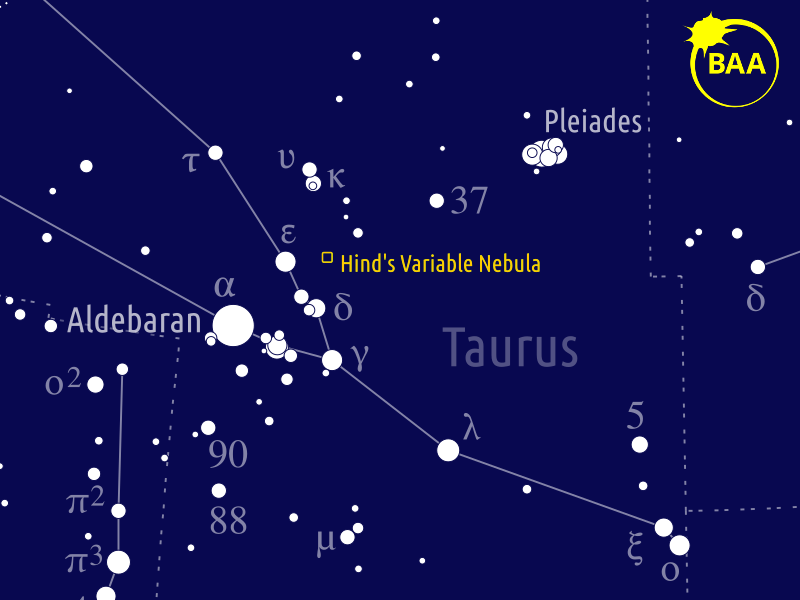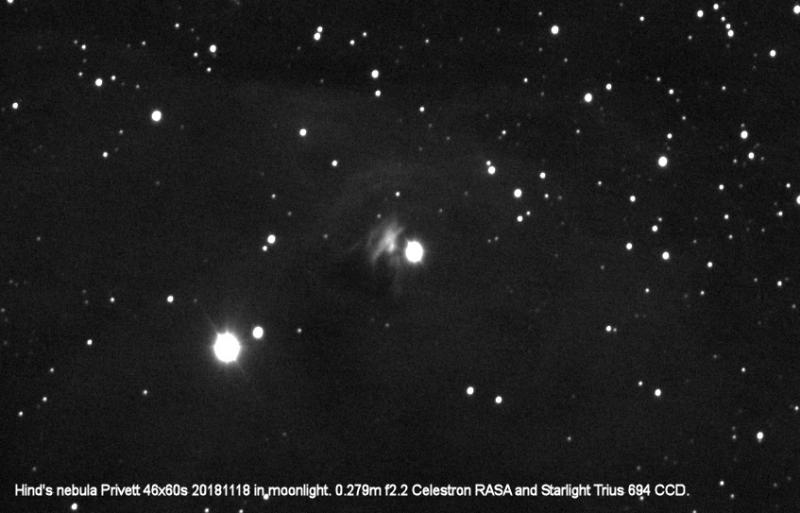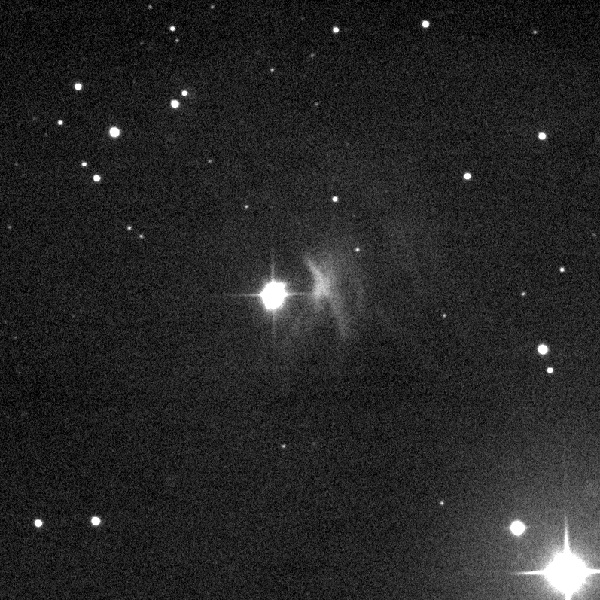2020 November 16
Observers Challenge – Spot a Variable Nebula


It is challenging for the visual observer due to its small size (about 1.5 arc minutes), and its proximity to T Tauri. The nebula is quite bright at the moment, though, about magnitude 9.
Hind’s has not been seen to be varying very much in recent years, however, though with examples such as McNeil’s and Gyulbudagian’s fading into oblivion in recent times there is no guarantee that Hinds will continue at its current level. Indeed in 1895 E.E. Barnard reported the surprising disappearance of it in Monthly Notices of the RAS. He wrote “To my surprise no trace of Hind’s nebula now exists – it seems to have entirely vanished !” and he was viewing with the Lick 36 inch aperture refractor!
The nebula is named after John Russell Hind who was an English astronomer who worked at the Royal Observatory Greenwich, and then for George Bishop. He discovered this variable nebula from Bishop’s observatory in Regents Park in 1852. Amongst his other discoveries that you might like to follow up on too; the variable stars R Leporis which is also known as Hind’s Crimson Star), U Geminorum, and he discovered the variability of Mu Cephei.


There are only a small number of known variable nebulae, and regular observations of these are welcomed by the Deep Sky Section.
Please submit your observations to the Deep Sky Section, and of course post on your Members Page.
| The British Astronomical Association supports amateur astronomers around the UK and the rest of the world. Find out more about the BAA or join us. |
